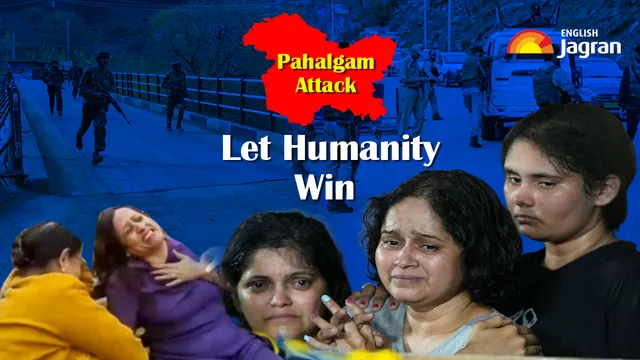- By Parul Srivastava
- Fri, 25 Apr 2025 06:09 PM (IST)
- Source:JND
Pahalgam Attack: On 22nd April, when tourists in Kashmir’s Pahalgam were busy clicking pictures, making reels and having a good time with their loved ones, they were brutally attacked by terrorists who started firing at them indiscriminately. The attack left 26 innocent people dead, who were simply seeking joy and were trying to create a lifetime memory with their families in the scenic beauty of Pahalgam’s Baisaran Valley, which is also known as “Mini Switzerland”.
But now, they are only left with gut-wrenching memories of losing their loved ones, which will haunt them for the rest of their life. The brutal attack left the nation mourning and fuming, and the pictures/videos from the attack spread like wildfire on the internet.
Amid all the anger, fear and many unanswered questions, social media instantly became a breeding ground for fake videos, hate comments/content, and a way to boost engagement. Let us be responsible citizens and do not let hate and personal profit take over.
READ MORE: ‘Local People Are First To Help’: J&K CM Omar Abdullah After Pahalgam Terror Attack
Encashing Someone’s Pain Is Not Empathy
As soon as the news of the ghastly attack broke out, people were quick to react, but what followed was disheartening. Social media was flooded with Ghibli art of the affected families, and it was widely circulated. Many pages used fabricated video of Lieutenant Vinay Narwal (who was killed) and his wife, Himanshi. It was posted on their account in the name of empathy and to attract some eyeballs, with others posting their happy vlog from Kashmir and remembering how Pahalgam was so peaceful and safe.
But is it a way to stand by with grieving families, or just another hack to boost the engagement of your page? Using emotional Bollywood songs in the background to even editing images with captions, like “Dharm Pucha Jaati Nhi”?, When you call out an entire community for an attack, do you even look into yourself? Posting content for likes and views is not empathy.
Hate Content Is Making People Blind
In the time of grief and anguish, many are injecting people with fear and hate. The internet is filled with Hindu vs Muslim debates, with people calling them ‘Gaddar’ and asking for blood for blood. And this is not new in India, every time there is a mayhem in the country, hate and fake narrative spreads like a wildfire, leaving people to lose sight of the real concerning issues. As per UNESCO -lpsos survey, disinformation, hate speeches, and fake news are a reality in India, with 64 per cent blaming social media feeds as the biggest source of disinformation, yet 1 in 2 Indians (56 per cent) claimed to turn to social media to consume news.
Who Is Paying The Price?
As per a report by Quint, Kashmiri Students are facing violence and threats all across India. Their parents are urging the government to take all the necessary steps to safeguard their children. Many students have expressed their concern that the aftereffects of the attack can be more intense than what they experienced after the Pulwama Attack in 2019, when 40 CRPF personnel lost their lives in a terror attack. In 2019, too, Kashmiri students all across the country were harassed and forced to leave campuses, a report by The Print stated.
As per PTI, several travel agencies in Delhi reported that 90 per cent of tourist bookings to Kashmir have been cancelled. It will impact the locals, who rely on the tourism industry, leading to financial hardships and job losses.
What Can You Do As A Citizen Who Also Wants Justice?
As a responsible citizen, it is important not to lose sight of what is right. Every time you press a share button for a fake news, fabricated video or a hate comment, you are building another enemy that will stay in our country’s heart forever. Stand united against Terrorism. When you make Them VS Us, remember they have already won. Always verify the content you share on your social media. Remember! Your one step can make a difference.

